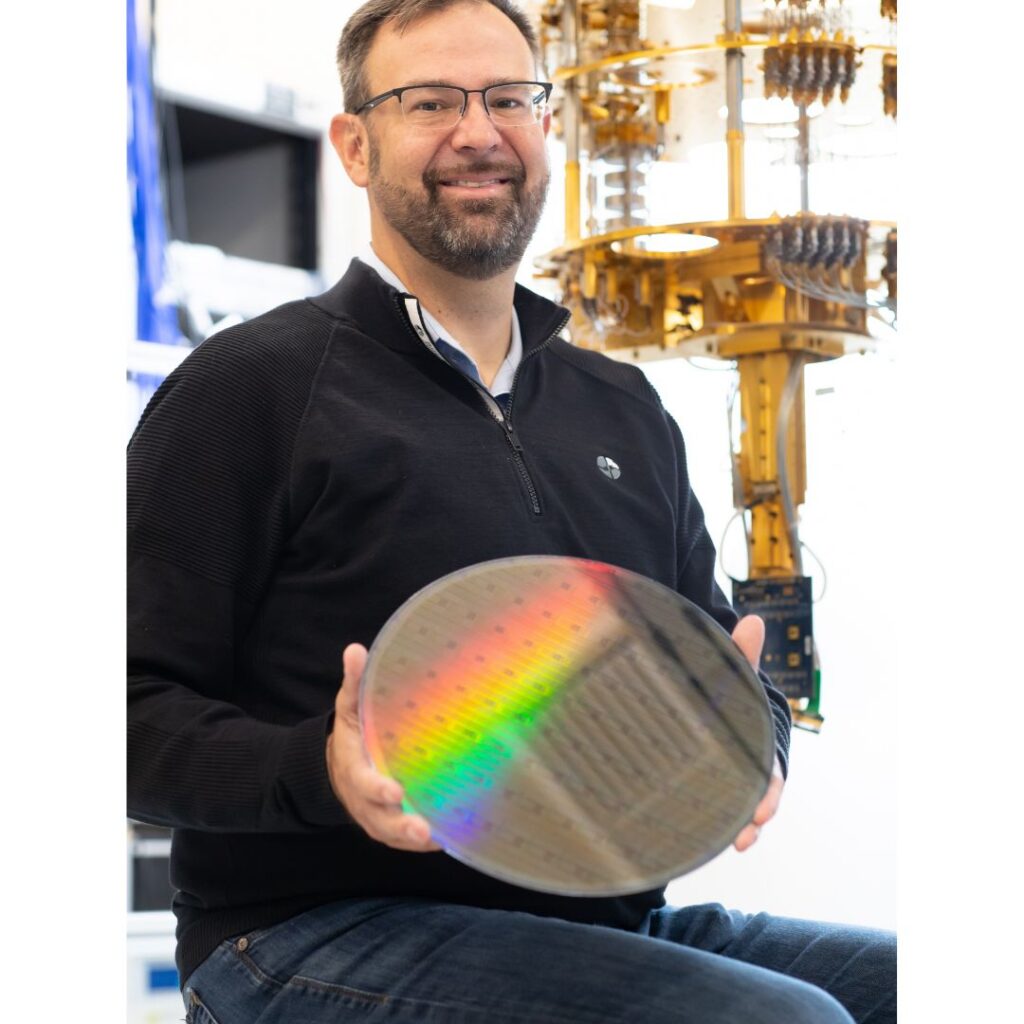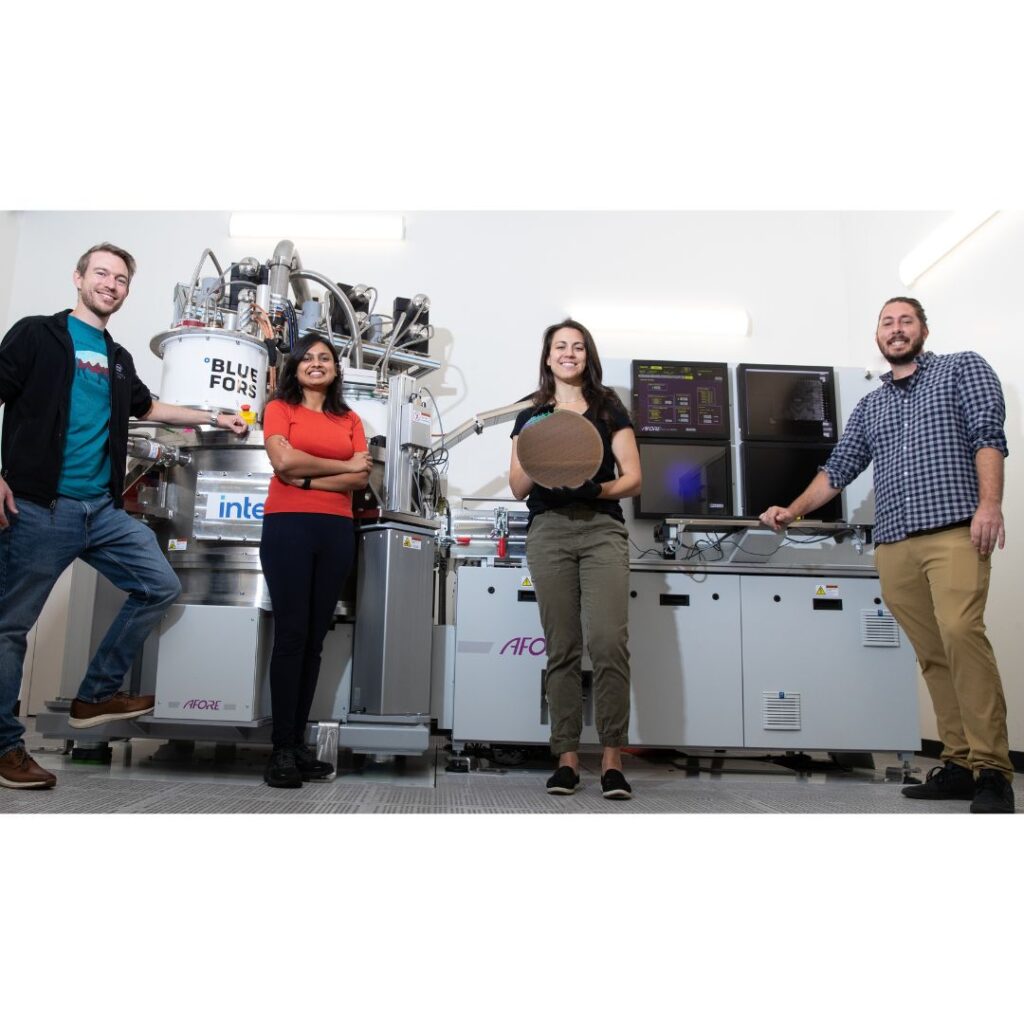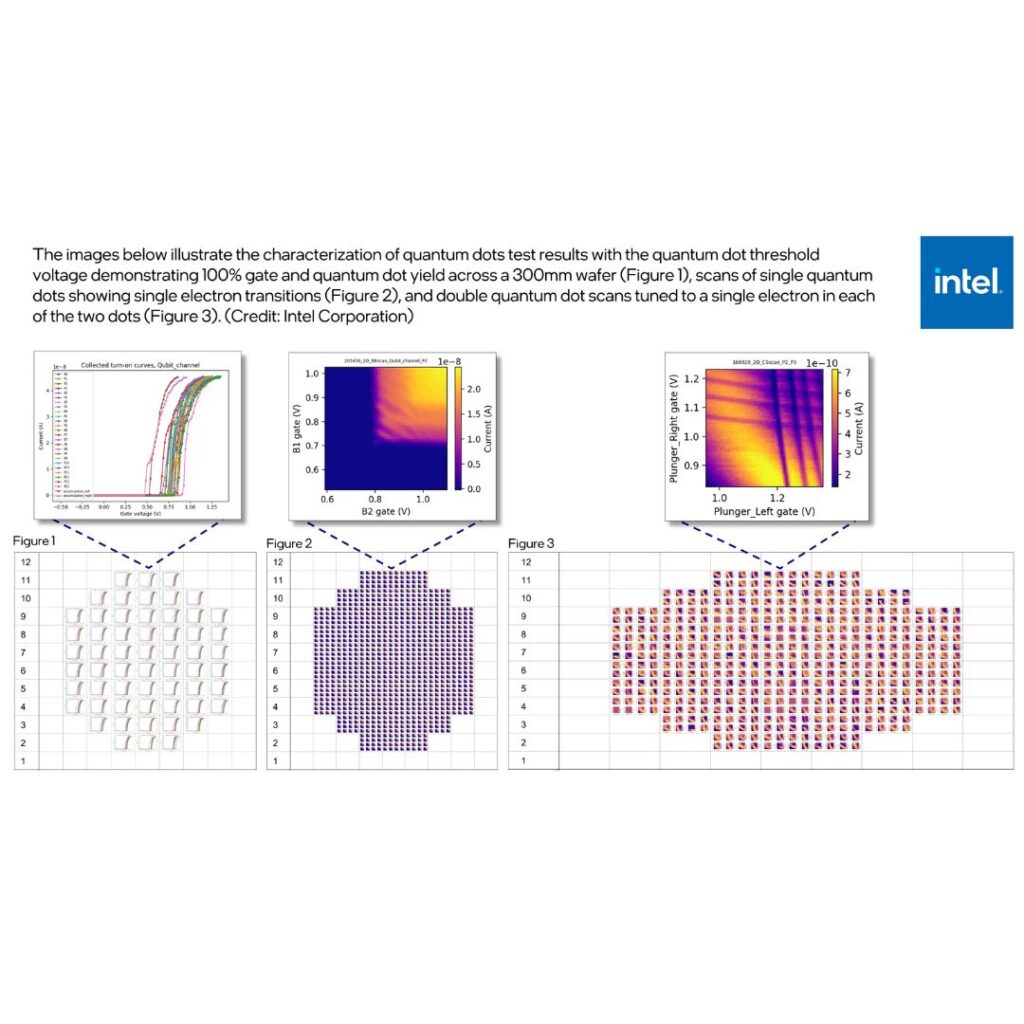Intel’s Quantum Chip Production Research Demonstrates Exceptional Yield of Quantum Dot Arrays.
- Intel demonstrates exceptional yield of quantum dot arrays, showing promise for large-scale qubit production using transistor fabrication technology.
- Intel Hits Key Milestone in Quantum Chip Production Research
The Intel Labs and Components Research organizations have demonstrated the industry’s highest reported yield and uniformity to date of silicon spin qubit devices developed at Intel’s transistor research and development facility, Gordon Moore Park at Ronler Acres in Hillsboro, Oregon. This achievement represents a major milestone for scaling and working toward fabricating quantum chips on Intel’s transistor manufacturing processes.

The research was conducted using Intel’s second-generation silicon spin test chip. Through testing the devices using the Intel cryoprober, a quantum dot testing device that operates at cryogenic temperatures (1.7 Kelvin or -271.45 degrees Celsius), the team isolated 12 quantum dots and four sensors. This result represents the industry’s largest silicon electron spin device with a single electron in each location across an entire 300-millimeter silicon wafer.
Today’s silicon spin qubits are typically presented on one device, whereas Intel’s research demonstrates success across an entire wafer. Fabricated using extreme ultraviolet (EUV) lithography, the chips show remarkable uniformity, with a 95% yield rate across the wafer. The use of the cryoprober together with robust software automation enabled more than 900 single quantum dots and more than 400 double dots at the last electron, which can be characterized at one degree above absolute zero in less than 24 hours.

Increased yield and uniformity in devices characterized at low temperatures over previous Intel test chips allow Intel to use statistical process control to identify areas of the fabrication process to optimize. This accelerates learning and represents a crucial step toward scaling to the thousands or potentially millions of qubits required for a commercial quantum computer.
Additionally, the cross-wafer yield enabled Intel to automate the collection of data across the wafer at the single electron regime, which enabled the largest demonstration of single and double quantum dots to date. This increased yield and uniformity in devices characterized at low temperatures over previous Intel test chips represents a crucial step toward scaling to the thousands or potentially millions of qubits required for a commercial quantum computer.

“Intel continues to make progress toward manufacturing silicon spin qubits using its own transistor manufacturing technology,” said James Clarke, director of Quantum Hardware at Intel. “The high yield and uniformity achieved show that fabricating quantum chips on Intel’s established transistor process nodes is the sound strategy and is a strong indicator for success as the technologies mature for commercialization.
“In the future, we will continue to improve the quality of these devices and develop larger scale systems, with these steps serving as building blocks to help us advance quickly,”
Clarke said
Researchers at Intel and QuTech, an advanced quantum computing research center consisting of the Delft University of Technology (TU Delft) and the Netherlands Organization for Applied Scientific Research (TNO) created the first silicon qubits at scale at Intel’s D1 manufacturing factory in Hillsboro, Oregon. The result is a process that can fabricate more than 10,000 arrays with several silicon-spin qubits on a single wafer with greater than 95% yield. This achievement is dramatically higher in both qubit count and yield than the typical university and laboratory processes used today. This research was published in the journal Nature Electronics and is Intel’s first peer-reviewed research demonstrating the successful fabrication of qubits on 300mm silicon. The new process uses advanced transistor fabrication techniques including all-optical lithography to produce silicon-spin qubits, the same equipment used to produce Intel’s latest-generation complementary metal-oxide-semiconductor (CMOS) chips. The groundbreaking research is a crucial step forward in the path toward scaling quantum chips, demonstrating that it’s possible for qubits to eventually be produced alongside conventional chips in the same industrial manufacturing facilities.

